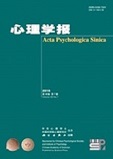Displaced aggressive behavior occurs when a person is provoked, is unwilling or unable to retaliate against the original provocateur, and subsequently attacks against a seemingly innocent target. Displaced aggressive behavior occurs in an inverse U tendency and arrives at its peak during the adolescence period. Junior high school students easily exhibit displaced aggressive behavior after being provoked at schools and families, and more importantly, their displaced aggressive behaviors may appear after a long time. Therefore, it is a useful beginning to find protective factors of inhibition displaced aggressive behavior. The Theoretical Model of Triggered Displaced Aggression stressed that displaced aggressive behavior was started by provocation with a series of cognitive processes as follows, such as hostile attribution. From this perspective, inhibiting inner negative cognition including proactive cognitive control and reactive cognitive control is useful for reducing displaced aggressive behavior. Unfortunately, the role of cognitive control is limited and may collapse if the intensity the provocation or trigger is beyond cognitive control. In order to reduce junior high school students’ displaced aggressive behavior, the current study conducted three experiments to explore the influence of cognitive control on displaced aggressive behavior, meanwhile investigating whether cognitive control has situation boundary conditions of provocation and trigger.
In Experiment 1, we recruited 30 junior high school students (excluding 4 invalid data) to complete two tasks repeatedly under the 3 (type of general cognitive control: baseline, proactive, reactive) × 2 (provocation: high, low) within-subjects design. To prime the students’ general cognitive control, we employed the AXCPT task over three weeks. In the first week, students completed the baseline task, which involved identifying the target clue (letter A) and the non-target clue (letter B). The target probe was the letter X, while the non-target probe was the letter Y. The required response for the students was the A-X combination. In the subsequent weeks, the students completed the proactive and reactive tasks in a random order. Then, students completed the revised Competitive Reaction Time task after the AXCPT task. The Competitive Reaction Time task consisted of two stages. In the first stage, students were exposed to noise and unable to retaliate. In the high-provocation condition, 80% of the trials had 105dB noise, while 20% had 70dB noise. Conversely, in the low-provocation condition, 20% of the trials had 105dB noise, and 80% had 70dB noise. In the second stage, students had the option to harm an innocent individual by choosing a noise level from low provocation and high provocation. The results of Experiment 1 indicated that priming general cognitive control did not reduce displaced aggressive behavior, but the reaction time for aggressive behavior was significantly lower in the proactive cognitive control condition compared to the baseline and reactive cognitive control conditions.
In Experiment 2, we recruited 42 junior high school students (excluding 2 invalid data) to complete two tasks repeatedly under the 3 (type of specific cognitive control: baseline, proactive, reactive) × 2 (provocation: high, low) within-subjects design. The AXCPT materials were modified to manipulate special prime effects using situational materials associated with displaced aggression. We used provocative situations as the targeted clue and non-provocation situations as the non-targeted clue. The targeted probe was non-aggressive behavior, while the non-targeted probe was displaced aggressive behavior. The same procedure from Experiment 1 was used to explore displaced aggressive behavior. The results of Experiment 2 showed that, in both specific proactive cognitive control condition and reactive cognitive control condition, displaced aggressive behavior was significantly lower than in the baseline condition, for both low and high provocative situations.
In Experiment 3, we recruited 80 junior high school students (excluding 8 invalid data) to complete two tasks repeatedly under the 3 (type of specific cognitive control: baseline, proactive, reactive) × 2 (provocation: high, low) × 2 (trigger: high, low) mixed design, provocation as a between-subjects factor. We added a triggered situation into the Competitive Reaction Time task, where participants could see an evaluation with a score from innocent before the proactive stage. Specifically, in the high trigger condition, a negative evaluation with a low score was displayed, while in the low trigger condition, a positive evaluation with a high score was displayed. The results of Experiment 3 revealed a significant interaction among specific cognitive control, provocative situations, and triggered situations. In the situation of provocation and trigger could effectively modulate the impact of specific cognitive control on displaced aggressive behavior. Moreover, in the high-provocation-high- trigger situation and high-provocation-low-trigger situation, the proportion of aggression reduced from baseline by proactive control was significantly higher than the proportion of aggression reduced from baseline by reactive control. However, in the low-provocation-high-trigger situation and low-provocation-low-trigger situation, there was no significant difference between the proportion of aggression reduced from baseline by reactive control and the proportion of aggression reduced from baseline by proactive control. Furthermore, in the high-provocation-high-trigger situation, the proportion of aggression reduced from baseline by proactive control was the highest among all conditions. These results indicated that specific cognitive control could effectively inhibit displaced aggressive behavior among junior high school students, with the situation boundary of proactive control occurring in the high-provocation-high-trigger situation.
The current study suggested that junior high school students’ specific cognitive control could effectively inhibit displaced aggressive behavior, and both specific proactive cognitive control and reactive cognitive control could reduce displaced aggressive behavior. In addition, there was situation boundary condition of specific cognitive control to inhibit displaced aggressive behavior, in which the situation boundary condition of specific proactive cognitive control appears in the high-provocation-high-trigger situation.




